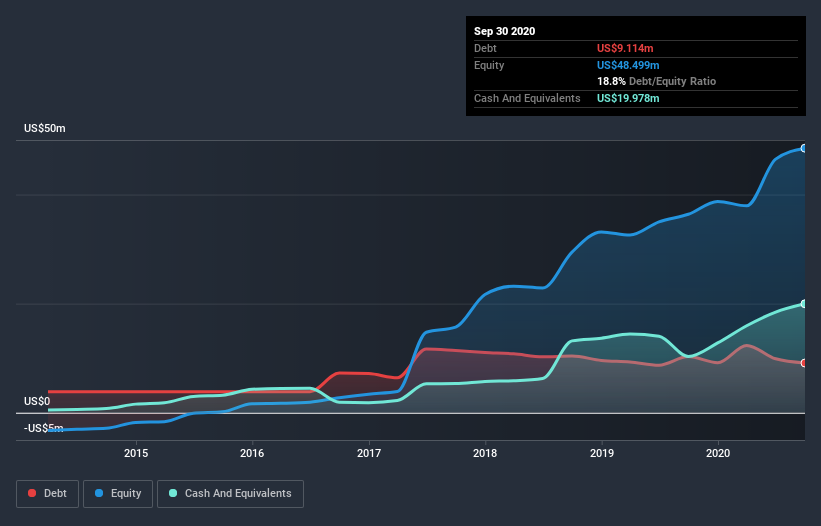These 4 Measures Indicate That Hamilton Thorne (CVE:HTL) Is Using Debt Reasonably Well
Warren Buffett famously said, 'Volatility is far from synonymous with risk.' So it might be obvious that you need to consider debt, when you think about how risky any given stock is, because too much debt can sink a company. We can see that Hamilton Thorne Ltd. (CVE:HTL) does use debt in its business. But is this debt a concern to shareholders?
Why Does Debt Bring Risk?
Debt is a tool to help businesses grow, but if a business is incapable of paying off its lenders, then it exists at their mercy. Ultimately, if the company can't fulfill its legal obligations to repay debt, shareholders could walk away with nothing. However, a more frequent (but still costly) occurrence is where a company must issue shares at bargain-basement prices, permanently diluting shareholders, just to shore up its balance sheet. By replacing dilution, though, debt can be an extremely good tool for businesses that need capital to invest in growth at high rates of return. The first thing to do when considering how much debt a business uses is to look at its cash and debt together.
See our latest analysis for Hamilton Thorne
What Is Hamilton Thorne's Net Debt?
As you can see below, Hamilton Thorne had US$9.11m of debt at September 2020, down from US$10.3m a year prior. However, it does have US$20.0m in cash offsetting this, leading to net cash of US$10.9m.
A Look At Hamilton Thorne's Liabilities
According to the last reported balance sheet, Hamilton Thorne had liabilities of US$10.8m due within 12 months, and liabilities of US$7.42m due beyond 12 months. Offsetting these obligations, it had cash of US$20.0m as well as receivables valued at US$3.28m due within 12 months. So it actually has US$5.00m more liquid assets than total liabilities.
This short term liquidity is a sign that Hamilton Thorne could probably pay off its debt with ease, as its balance sheet is far from stretched. Simply put, the fact that Hamilton Thorne has more cash than debt is arguably a good indication that it can manage its debt safely.
Shareholders should be aware that Hamilton Thorne's EBIT was down 36% last year. If that earnings trend continues then paying off its debt will be about as easy as herding cats on to a roller coaster. There's no doubt that we learn most about debt from the balance sheet. But ultimately the future profitability of the business will decide if Hamilton Thorne can strengthen its balance sheet over time. So if you're focused on the future you can check out this free report showing analyst profit forecasts.
But our final consideration is also important, because a company cannot pay debt with paper profits; it needs cold hard cash. While Hamilton Thorne has net cash on its balance sheet, it's still worth taking a look at its ability to convert earnings before interest and tax (EBIT) to free cash flow, to help us understand how quickly it is building (or eroding) that cash balance. Over the last three years, Hamilton Thorne actually produced more free cash flow than EBIT. There's nothing better than incoming cash when it comes to staying in your lenders' good graces.
Summing up
While it is always sensible to investigate a company's debt, in this case Hamilton Thorne has US$10.9m in net cash and a decent-looking balance sheet. And it impressed us with free cash flow of US$4.2m, being 103% of its EBIT. So we don't have any problem with Hamilton Thorne's use of debt. The balance sheet is clearly the area to focus on when you are analysing debt. However, not all investment risk resides within the balance sheet - far from it. For example, we've discovered 2 warning signs for Hamilton Thorne that you should be aware of before investing here.
Of course, if you're the type of investor who prefers buying stocks without the burden of debt, then don't hesitate to discover our exclusive list of net cash growth stocks, today.
This article by Simply Wall St is general in nature. It does not constitute a recommendation to buy or sell any stock, and does not take account of your objectives, or your financial situation. We aim to bring you long-term focused analysis driven by fundamental data. Note that our analysis may not factor in the latest price-sensitive company announcements or qualitative material. Simply Wall St has no position in any stocks mentioned.
Have feedback on this article? Concerned about the content? Get in touch with us directly. Alternatively, email editorial-team (at) simplywallst.com.

 Yahoo Finance
Yahoo Finance 
